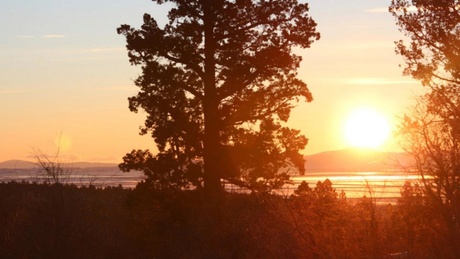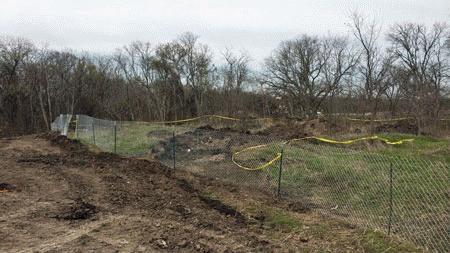Vincent Schilling, Indian Country Today Media Network
Indian Country Today Media Network continues to highlight the issues of jobs and economic development in Indian country in conjunction with the 50th anniversary of the March on Washington for Jobs and Freedom which was yesterday, August 28. In 2007, the U.S. Department of the Interior, Bureau of Indian Affairs released the 2005 American Indian Population and Labor Force Report. Based on this report, ICTMN has compiled a list of tribes that struggle with the highest rates of unemployment for tribal members that are available to work.
Though this report is federally mandated to be released no less than biennially, no newer numbers have been reported although a report in 2013 is currently in the works.
RELATED: Legal and Political Questions Surround Interior’s Decision Not to Release Tribal Jobs Survey
In order to provide an accurate overview and as not to skew percentages too broadly we listed tribes that list their tribal enrollments above 1,000 and have at least 500 unemployed. Additionally, since a large amount of Alaskan tribes have smaller numbers and thus percentages can change at a lower ratio and could be vastly different as of 2013, we focused on tribes in the lower 48 states.
Sokaogon Chippewa Community
93 percent unemployment
Tribal enrollment 1,274
Available for work 961
Unemployed 894
The Sokaogon Chippewa Community of Mole Lake, Wisconsin has the highest percentage of unemployed tribal members at 93 percent with 894 unemployed. Out of those that are employed, 79 percent are still living below national poverty standards. The Bureau of Labor Statistics (BLS) lists Wisconsin as having an unemployment rate of 6.8 percent.
Pechanga Band of Luiseno Indians
91 percent unemployment
Tribal enrollment 1,342
Available for work 595
Unemployed 544
The Pechanga Band of Luiseno Indians reservation territory lies in Temecula, California. Of those that are employed, none live below poverty standards. With the opening of the Pechanga Resort and Casino in 2002, the tribe looks to continue its development of the tribal economy. The BLS lists California as having an 8.7 percent unemployment rate.
Oglala Sioux Tribe of Pine Ridge
89 percent unemployment
Tribal enrollment 43,146
Available for work 29,539
Unemployed 26,408
Perhaps most infamous for its levels of unemployment and poor living conditions for the majority of its tribal residents the Oglala Sioux of Pine Ridge also has the highest number of unemployed. Unlike South Dakota which has 3.9 percent unemployment, Pine Ridge has an approximate 85 percent higher rating than the state.
Though well over 1,000 residents on the reservation are employed, 34 percent of those are still living below poverty standards.
RELATED: Poverty-Busters: Successful Programs on the SD Reservations
Cheyenne River Sioux Tribe
88 percent unemployment
Tribal enrollment 15,376
Available for work 11,205
Unemployed 9,893
The Lakota Nation is comprised of more than 3 million acres of land in central South Dakota with approximately 70 percent living on the reservation. Approximately 1,300 residents are employed that live on the reservation, 100 percent are still living below poverty standards.
The Apache Tribe of Oklahoma
87 percent unemployment
Tribal enrollment 1,860
Available for work 1,702
Unemployed 1,485
The Apache Tribe of Oklahoma, also known as the Plains Apache is a federally recognized tribe located in Anadarko, Oklahoma. With 87 percent unemployment and about 1,700 tribal members available to work, only slightly over 200 are employed. Of that 200+, 100 are living below the standards of poverty. Oklahoma State’s unemployment sits at 5.3 percent.
Standing Rock Sioux Tribe
86 percent unemployment
Tribal enrollment 6,461
Available for work 3,565
Unemployed 3,074
The Standing Rock Sioux Tribe that straddles the border of North and South Dakota is the sixth largest reservation in land area in the United Sates as well as holding sixth place on our list. With tribal enrollment of 6,461 and more than 3,565 available to work, only 491 are employed. The 3,074 out of work equates to 86 percent unemployment. Of those employed more than 200 or 43 percent are living below poverty standards.
Little Traverse Bay Band
86 percent unemployment
Tribal enrollment 4,073
Available for work 1,657
Unemployed 1,427
The Little Traverse Bay Bands of Odawa Indians, which traditional homelands lay on the northwestern shores of Michigan States Lower Peninsula, are number seven on the list with 86 percent unemployment. Though 18 percent of those employed are living below the standards of poverty, it still overcomes a comparison to Michigan’s relatively “high” unemployment rate of 8.8 percent.
Round Valley Indian Tribes
86 percent unemployment
Tribal enrollment 3,785
Available for work 1,450
Unemployed 1,241
The Round Valley Indian Reservation which lies primarily in Mendocino County, California is number eight with 86 percent unemployment for its 1,450 members available for work. Only 209 are employed and more than half of that number or 54 percent are living in poverty. California’s unemployment currently sits at 8.7 percent.
Shoshone Tribe of the Wind River Reservation
86 percent unemployment
Tribal enrollment 3,724
Available for work 2,686
Unemployed 2,248
The Shoshone Tribe of the Wind River Reservation which shares reservation territory with the Northern Arapaho and whose reservation covers 2.2 million acres in Central Wyoming, hold the number nine spot with 84 percent unemployment for its more than 3,700 tribal members. Of the 2,686 available for work, 2,248 are unemployed. Of the 438 employed, 187 are living in poverty conditions. Wyoming’s unemployment rate is 4.6 percent.
Rosebud Sioux Tribe
83 percent unemployment
Tribal enrollment 26,237
Available for work 14,428
Unemployed 11,909
With 26,237 enrolled members and over 14,428 available for work, the Rosebud Sioux Tribe in South Dakota with 11,909 members without work and unemployment at 83 percent holds the number 2 spot in terms of number of tribal members without a job. It holds the number 10 spot in terms of unemployment percent. Of the 2,519 that are employed, 1,920 or 76 percent are still living in poverty.
Walker River Paiute Tribe
83 percent unemployment
Tribal enrollment 2,979
Available for work 850
Unemployed 705
The Walker River Paiute Reservation, located in Midwestern Nevada about 100 miles southeast of Reno, Nevada has an 83 percent unemployment rate for its nearly 3,000 members, with 850 available for work and only 145 employed. Nevada’s unemployment currently sits at a “high” of 9.5 percent.
Winnebago Tribe
82 percent unemployment
Tribal enrollment 4,321
Available for work 1,055
Unemployed 870
The Winnebago Indian Reservation, which lies in northeastern Nebraska and has the largest community in the Village of Winnebago has an unemployment rating of 82 percent since only 185 of the 1,055 available have work. Of those working, 172 or 93 percent are living in poverty. Nebraska’s unemployment rate in comparison is currently 4.2 percent.
Puyallup Tribe
82 percent unemployment
Tribal enrollment 3,547
Available for work 12,437* (includes non-enrolled workers)
Unemployed 10,250
As a Coast Salish Tribe from western Washington State in today’s Tacoma, the Puyallup Tribe has an 82 percent unemployment rate for its 12,437 available to work, translating to 10,250 unemployed. Of the 2,187 working, 1,412 are living below poverty standards. Washington State has unemployment of 6.9 percent.
Bad River Band
81 percent unemployment
Tribal enrollment 6,875
Available for work 1,800
Unemployed 1,465
The Bad River Band of the Ojibwe / Chippewa is located on the south shore of Lake Superior in northern Wisconsin. At 81 percent unemployment, Bad River holds the number 14 spot with 335 employed out of the 1,800 available. Of those employed 273 or 81 percent are living below poverty standards. By comparison, Wisconsin State has unemployment of 6.8 percent.
Shoshone-Bannock Tribes-Fort Hall
81 percent unemployment
Tribal enrollment 4,796
Available for work 9,593* (includes non-enrolled workers)
Unemployed 7,757
The Fort Hall Indian Reservation of the Shoshone-Bannock is located in southeastern Idaho on the Snake River Plain. With more than 7,500 unemployed, the tribe holds the number 15 spot with 81 percent unemployment. Of those employed, 747 or 41 percent live below poverty. Idaho in comparison has an unemployment rate of 6.6 percent.
Read more at http://indiancountrytodaymedianetwork.com/2013/08/29/danger-zone-15-tribes-unemployment-rates-over-80-percent-151078









